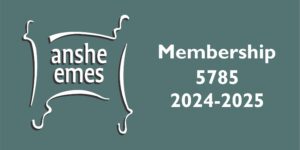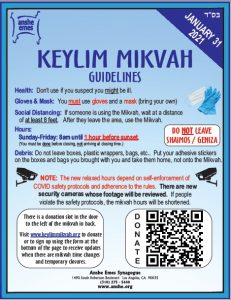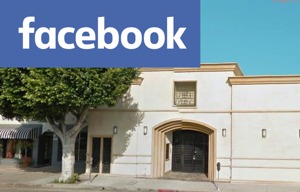
I. Summary
A. Aharon & His Sons Are Chosen As Kohanim. Aharon and his sons Nadav, Avihu, Elazar and Isamar were chosen by Hashem to serve as Kohanim (Priests). One of their tasks was to keep the lamps of the Menorah burning continuously in the Sanctuary (the oil for the lamps was provided by members of the general community). While officiating in the Sanctuary, the Kohanim were to wear special garments. Aharon, as Kohein Gadol (High Priest), was to be robed in especially distinctive hand-made vestments.
B. Confirmation of Aharon & Sons. Their selection as Kohanim was confirmed by a number of symbolic acts — Aharon was presented with a robe by Moshe and anointed with oil; the other Kohanim were then investitured; various sacrifices were brought to the Sanctuary, placed on the Kohanim’s hands, waved before the Altar and finally burnt to symbolize the Kohanim’s right to offer sacrifices. These rites were repeated daily for seven days.
C. Kohanim’s Obligations. Among other things, the Kohanim were charged with bringing daily burnt-offerings of a yearling lamb (in both the morning and evening) on behalf of the Jewish people.
II. Divrei Torah
A. Lil’Mode U’lilamed (Rabbi Mordechai Katz)
1. The Meil & Loshon Ho’rah. Among the garments worn by the Kohein Gadol (High Priest) was the Meil (coat). The Meil was worn as atonement for sins involving “loshon ho’rah” (derogatory speech about others), as symbolized by the following: (a) its color (i.e., sky blue) is a reminder that our words rise to Heaven, and we should thus be careful what we say; (b) its neckline was tight, yet never ripped, reminding us to tighten our mouths when the desire to speak loshon ho’rah is felt; and (c) bells (gold bells which made noise, and cloth bells which were silent) hanging from the bottom, indicating that there are times when we should speak and times when we should remain silent.
2. A Lesson In Humility. Chazal teach that us that bells were to remind the Kohein Gadol of the need for humility in his actions, since it was a method of “asking Hashem’s permission” before entering the Holy of Holies.
B. Kol Dodi on the Torah (Rabbi David Feinstein)
1. Ner Tamid (Eternal Light). There was a particular miracle which occurred in connection with the Menorah in the Mishkon (and later in the Temple) — each day before sunset, the Kohein would light the seven lamps of the Menorah which were filled with just enough oil to last through the night; six of the lamps would burn until morning and go out, but the seventh would continue to burn until the following sunset (when all seven lamps were again lit). This miracle testified that the Shechinah (Divine Presence) was present in the Mishkon (and later in the Temple), and reminds us that Hashem’s Hand is always at work in the physical world.
2. Atmosphere of Holiness. “And I [Hashem] shall meet there with the Children of Israel, and I shall be made Holy in My Glory”. The Mishkon only had holiness because the Shechinah (Divine Presence) dwelt therein; as beautiful and elegant as its structure was, without the Shechinah it had no feeling of holiness. The same is true of our homes; they become holy only when we infuse an awareness of G-d’s Glory into them and our activities, through the mitzvos of Shabbos and Holidays, family purity, Torah learning, mezuzah, etc.
C. Growth Through Torah (Rabbi Zelig Pliskin)
1. Do acts of kindness without expecting anything in return. “And you [Moshe] shall command the Children of Israel that they bring to you pure olive oil beaten for the light to cause the lamp to burn always.” The Midrash comments that Hashem obviously didn’t need their oil but “you should nonetheless make a light for Him just as He makes light for you.” (The Midrash gives an analogy of a blind person and a sighted person who were walking together, with the sighted person leading the way. When they reached their destination, the sighted person asked the blind person to make a light, saying “I want you to do this so you will not feel a debt of gratitude for what I have done for you; now you have done something for me in return”.) R’ Yeruchem Levovitz commented that this teaches us what true kindness is — doing something for others without any expectation of receiving something in return, and is illustrated by the following story: A teacher at Aitz Chaim Yeshiva in Jerusalem recalled a time when his child was seriously ill and he and his wife would have to stay by his bedside all night, seriously draining them both emotionally and physically. One night, Rabbi Aryeh Levin and his wife showed up and said “Go to sleep now, we will stay with your child”; in his genial, charming way, Rabbi Levin explained that it was doing him and his wife a favor since they had something very important to discuss which they couldn’t discuss at home with their children present (A Tzaddik In Our Time).
2. Be proud of doing Hashem’s will. The turban atop the Priest’s head atoned for arrogance and conceit; one may, however, be proud when doing Hashem’s will (i.e., as alluded to by the verse, “when pride is holy to the Almighty”, then it can be on top of a person’s head [Ksav Sofer]). When you are proud of your Torah values, you will not be ashamed to fulfill Hashem’s commandments even if there are others who do not appreciate them or mock or insult you. And, when you are proud of your good deeds, you will be motivated to do more good.
D. Chassidic Dimension (the Lubavitcher Rebbe, Rabbi Menachem M. Schneerson, z’tl)
Moshe and his people: a unique relationship. Moshe’s place in the Torah is truly unique. No one is featured so prominently nor more often; in fact, beginning with Shemos, his name is mentioned in all subsequent Parashas (until Devarim), except for this Parsha. What isn’t he mentioned here? After the sin of the Golden Calf, Moshe said to Hashem “and if [You should decide] not [to forgive the Jewish people], then erase me from your Book [the Torah] which You have written”. As a result, his name is omitted in this Parsha (as Chazal teach, “even a conditional malediction uttered by a righteous person comes to pass”). How was it that Moshe — singularly devoted to Torah — would eternally jeopardize his status in the Torah for a small group of individuals who committed the sin of the Golden Calf? As closely associated as he was with Torah, he was even more intimately bound up with the Jewish people. By so doing, he teaches us that the meaning of loving all Jews (whatever their status) with the greatest measure of self-sacrifice and without reservation.
E. Wellsprings of Torah (Rabbi Alexander Zusia Friedman)
Serving Hashem At All Times. “The one lamb thou shalt offer in the morning, and the other lamb thou shalt offer at dusk.” We must endeavor to serve Hashem in the morning as well as in the evening, in youth as well as in old age. In youth, the body is healthy and strong and man is in full possession of his vigor and energy. However, his mental faculties are still not fully matured. In old age, his mental faculties are fully matured, but his physical strength has declined. Accordingly, the morning sacrifice should remind man to accept the Sovereignty of Heaven when the sun of his own life in on the rise, and to not allow himself to be led astray. The sacrifice which man is required to offer at dusk should teach him that even when the sun of his life is about to set, he must not grow lack in his endeavors, but must gather new strength by serving Hashem. (HaDrash VeHaEyun)
F. Darash Moshe (Rav Moshe Feinstein, z’tl)
Kindling the Menorah. “Aharon and his sons shall arrange it from evening until morning . . . and you, bring near to yourself Aharon your brother.” It is noteworthy that the commandment to kindle the Menorah was given to Aharon and his sons before they were officially initiated into the Priesthood. From this we can see that Aharon made himself worthy of lighting the Menorah even before he became a Kohein, by virtue of his own accomplishments and independently of his status as a Kohein. Indeed, it was the merit of kindling the Menorah that brought him and his sons into the Priesthood, since the light of the Menorah permeates the entire world and inspires everyone to educate his children to study Torah and observe mitzvos. Furthermore, we learn from this the great obligation which parents and teachers have to give their charges the best possible education and upbringing. Just as the Kohein continued to kindle each light until it’s flame ascended by itself (Shabbos 21a), so too are parents and educators required to inculcate Torah in their children and students in such a way that they will be able to understand and grow in Torah by themselves.
G. Peninim on the Torah (Rabbi A.L. Scheinbaum)
1. The Priestly Vestments. “And you shall make sacred garments for Aharon your brother for glory and majesty.” The Torah devotes an entire Parsha to the preparation of the priestly vestments. Indeed, the Torah gives more space to the priestly vestments than to the holy vessels which were actually used in the Mishkon. Although the priestly vestments were not an actual part of the service, the service could be performed only when the Kohein was wearing them. It seems apparent that the vestments performed a sublime role. The Chizkuni explains that these garments constituted a sanctified beauty. Clothing is a symbol of man’s higher nature. By distinguishing between man and animals, clothes give a man special dignity. The Koheinim were, therefore, required to dress in accordance with their exalted position, reflective of man’s higher calling. HaRav M. Gifter, Shlita suggests the following additional insight into the vestments: every virtue which man possesses is valued according to his ability to “clothe” himself in that characteristic. Man’s essence must mirror these qualities. The moral attributes and character refinement manifested by the Kohein should be inherent throughout his entire essence. It should be reflected externally as well. If these traits are not externally apparent, then the Kohein is not suitable to entreat Hashem on behalf of Am Yisroel. HaRav Gifter extends this idea to include all Jews, since we are all obligated to affirm ourselves as a member of “a kingdom of priests and a holy nation.” To fulfill this noble goal, we must invest ourselves with the “clothing” of a holy nation: pure moral characteristics, Torah and mitzvos. Our worthiness of the mantle “holy nation” is symbolized by our being “clothed” in our holy merit.
2. The Ner Tamid (Eternal Light). The Pardes Yosef compares the constant burning of the Ner Tamid to the Ner Tamid of Torah which must maintain its continuity in the hearts of every Jew. All too often we affix the Ner Tamid in the House of Study and Shul, and abandon it there. It must also burn “outside the Testimony” — in the home, in the streets and throughout all of our endeavors. The Ner Tamid of Torah guidance should direct every facet of our lives.
NEXT WEEK: KI SISA
COMING SOON: PURIM



 Visit the group and request to join.
Visit the group and request to join.
